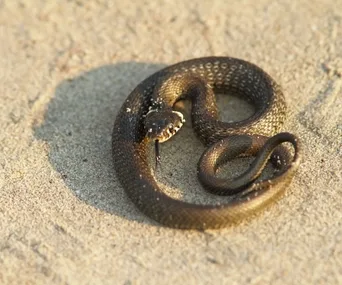Little Eli Campbell from Agnes Water in Queensland remains in a serious condition after being bitten by the third most venomous snake in the world last week while collecting eggs from a chicken pen.
He went into cardiac arrest after being bitten by the coastal taipan, and was dead for six minutes before paramedics were able to revive him. Media reports say that his pregnant mother Brittany’s quick thinking of applying pressure to the bite region may have saved him.
Eli spent most of last week in an induced coma, and his parents Brittany and Giles have remained by his side at the Lady Cilento Hospital in Brisbane.
A neighbor and friend, Blake Hyland, has set up a Go Fund Me page to help the Campbells.
“It is a situation that could of easily happened to my family or any other young families that live in rural Australia,” Blake said on the page.
“The situation has caused Eli’s family to have to drop everything to be by his side at the hospital which is almost 500km away.
“All funds raised will go to Eli’s medical bills along with his hopeful recovery. Funds will be directly deposited into the family’s bank account. Eli’s parents have said that they want any excess funds raised to be donated to one of the multiple organisations who’ve helped them along the way like CareFlight etc.”
The campaign has already raised more than $21,000.
How to deal with a snake bite
This is what St John’s Ambulance advises:
DO NOT wash venom off the skin.
DO NOT cut the bitten area.
DO NOT try to suck venom out of wound.
DO NOT use a tourniquet.
DO NOT try to catch the snake.
And then follow these 10 steps:
Follow DRSABCD (Danger, Response, Send for help, Airway, Breathing, CPR, Defribillation).
Reassure the patient and ask them not to move.
Apply a broad crepe bandage over the bite site as soon as possible.
Apply a pressure bandage (heavy crepe or elasticised roller bandage) starting just above the fingers or toes of the bitten limb, and move upwards on the limb as far as can be reached (include the snake bite). Apply firmly without stopping blood supply to the limb.
Immobilise the bandaged limb with splints.
Ensure the patient does not move.
Write down the time of the bite and when the bandage was applied. Stay with the patient.
Regularly check circulation in fingers or toes.
Manage for shock.
Ensure an ambulance has been called.
.jpg?fit=900%2C750)


